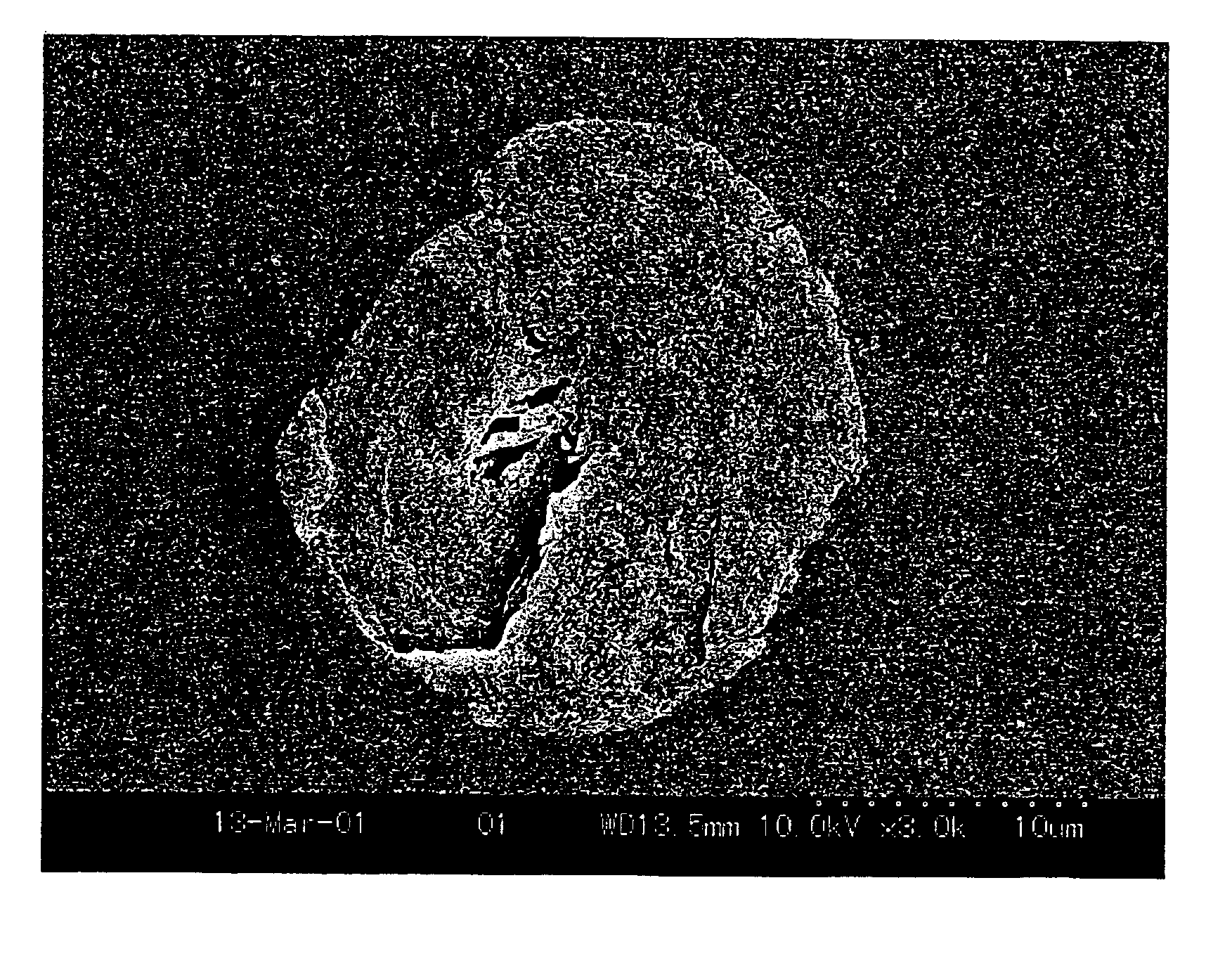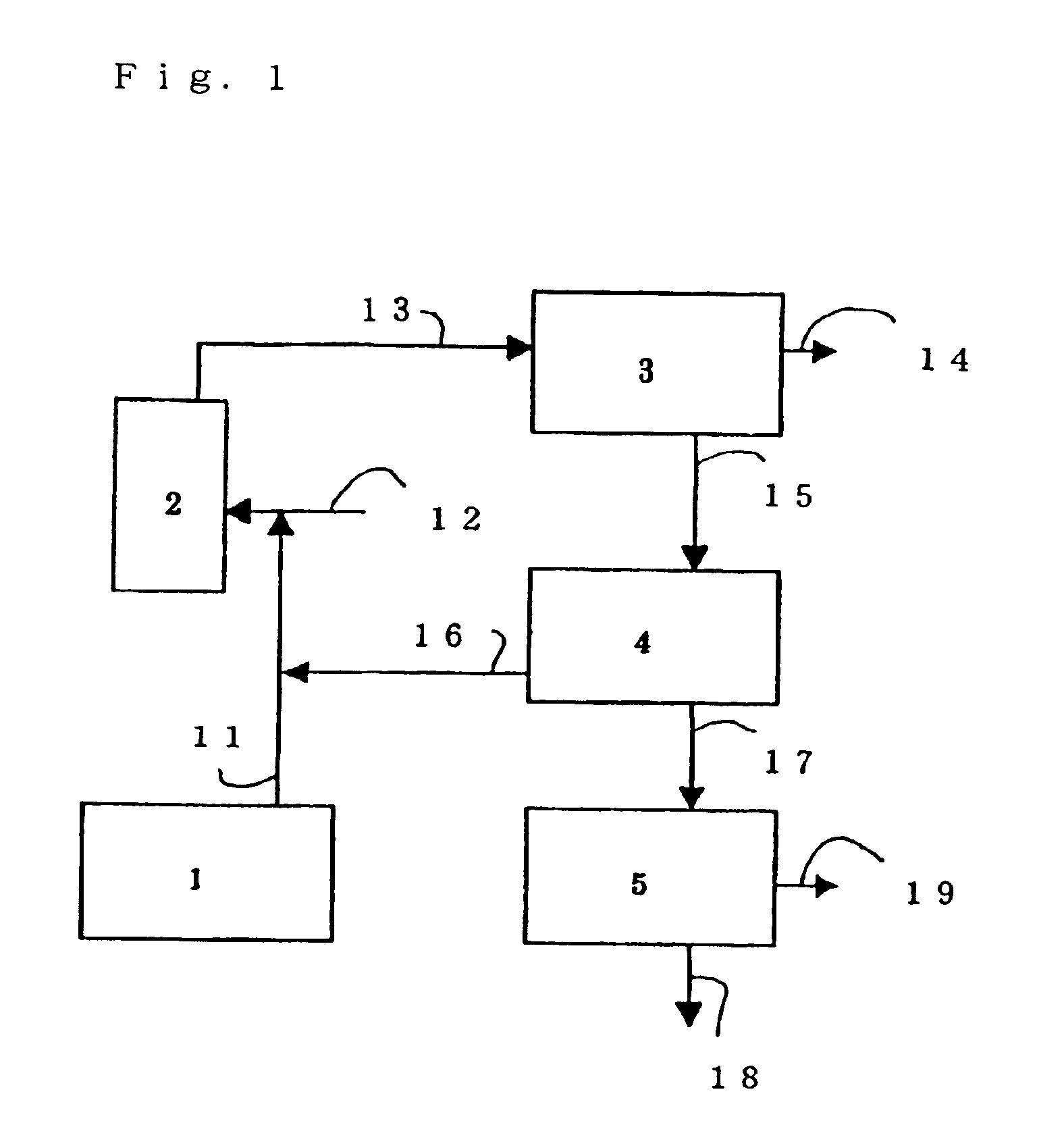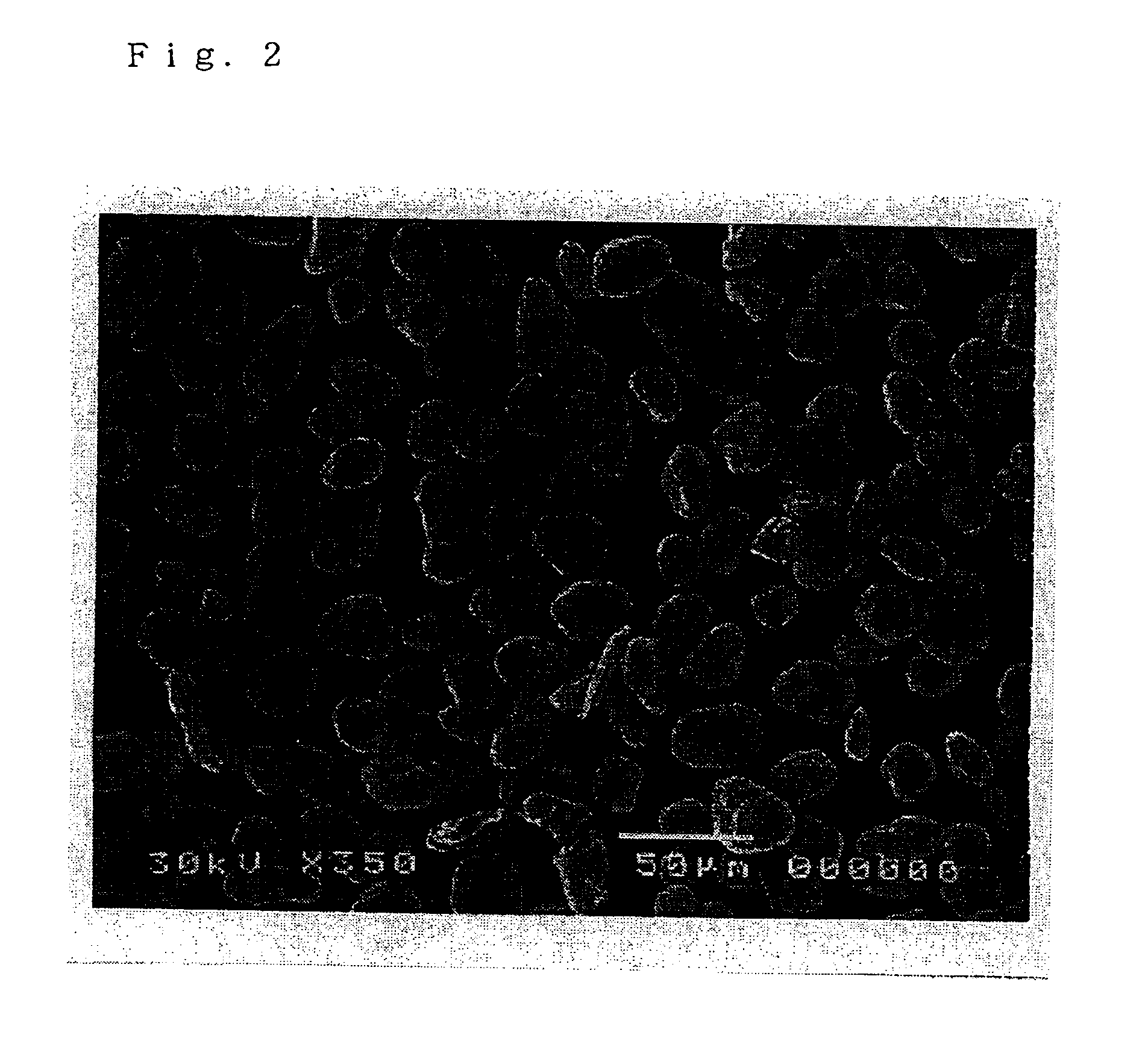Graphite particles and process for production thereof
a technology of graphite particles and graphite, which is applied in the direction of sustainable manufacturing/processing, cell components, and final product manufacturing, can solve the problems of scaly graphite particles obtained by grinding, and achieve the effects of high crystallinity of graphite, easy production, and excellent properties of highly crystalline graphi
- Summary
- Abstract
- Description
- Claims
- Application Information
AI Technical Summary
Benefits of technology
Problems solved by technology
Method used
Image
Examples
example 1
[0094]Graphite particles produced in China, having an average particle diameter of 3.3 mm in the AB plane direction and a lattice constant Co (002) of 0.6707 nm were used as a raw material graphite. A pin mill produced by Leche Co. was used as a grinder. When the rpm of the rotor of the pin mill reached 20,000, the raw material graphite was fed at a rate of 200 g / min by allowing the graphite to be carried by the suction wind generated by the grinder.
[0095]The outermost rotating pins were arranged on a circumference of 9.5 cm in diameter and their linear speed was about 100 m / sec.
[0096]The ground graphite particles were collected by a cyclone and a bag filter. The collected graphite particles were again fed into the grinder by allowing them to be carried by the above suction wind. This grinding operation was repeated 20 times in total to obtain spherical graphite particles.
[0097]The graphite particles obtained had the following properties.[0098]Average particle diameter: 25.6 μm[0099...
example 2
[0121]Graphite particles produced in Brazil, having an average particle diameter of 0.3 mm in the AB plane direction and a lattice constant Co (002) of 0.6708 nm were used as a raw material graphite. As a grinder, there was used the same pin mill (produced by Leche Co.) as used in Example 1 except that the rotor (pin rotor) of the pin mill was changed to an edge rotor having triangular teeth.
[0122]The triangular teeth were arranged coaxially with the edges directed to the center of the rotor and with each two adjacent triangular teeth of the outermost circumference being apart so as to form a gap of 2 mm. The diameter of the outermost circumference was 8.0 cm. In ordinary grinding, a strainer is provided near the circumference of the rotor; however, no strainer was provided in this Example.
[0123]The inlet and the outlet of the pin mill were connected to each other by a pipe. Thereby, the air current generated by the rotation of the rotor is returned from the outlet to the inlet via ...
application example 1
[0131]400 g of the spherical graphite particles obtained in Example 1 and 200 g of a novolac type phenolic resin (melting-starting temperature: 95° C.) produced by Gunei kagaku Kogyosha were placed in a Henschel mixer, 10 B produced by Mitsui Mining Co., Ltd. The agitating blades of the mixer were rotated at 3,200 rpm for 10 minutes to conduct mixing and kneading. During this period, the sample temperature increased from room temperature to 120° C.
[0132]Then, cooling was made and the mixer rotation was decreased to 1,600 rpm, and agitation was made at 110° C. for 2 minutes to obtain granules having an average particle diameter of about 100 μm.
[0133]The granules were molded at 200° C. at 10 MPa using a press, PY-50EA produced by Kodaira Seisakusho, to obtain a molded material of 120×100×1 mm for fuel cell separator. The molded material had a density of 2.00 g / cc, a three-point bending strength of 62 MPa as measured by JIS K 6911-1979, a contact resistance of 2.0 Ω·cm2, and a helium l...
PUM
| Property | Measurement | Unit |
|---|---|---|
| particle diameter | aaaaa | aaaaa |
| lattice constant | aaaaa | aaaaa |
| particle diameter | aaaaa | aaaaa |
Abstract
Description
Claims
Application Information
 Login to View More
Login to View More - R&D
- Intellectual Property
- Life Sciences
- Materials
- Tech Scout
- Unparalleled Data Quality
- Higher Quality Content
- 60% Fewer Hallucinations
Browse by: Latest US Patents, China's latest patents, Technical Efficacy Thesaurus, Application Domain, Technology Topic, Popular Technical Reports.
© 2025 PatSnap. All rights reserved.Legal|Privacy policy|Modern Slavery Act Transparency Statement|Sitemap|About US| Contact US: help@patsnap.com



